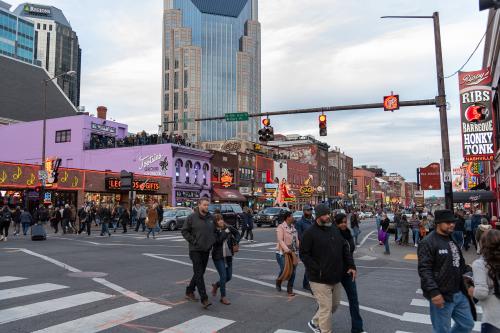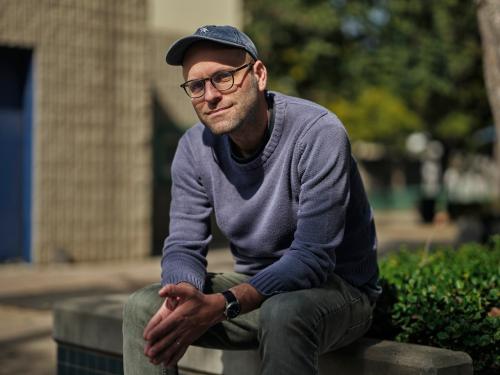*A slightly modified version of this commentary appeared in the St. Louis Post-Dispatch on October 19, 2004.
So it looks like Missouri’s gubernatorial race will turn on “character” issues.
GOP consultant Paul Zemitzsch predicts Secretary of State Matt Blunt will portray Claire McCaskill, the Democratic state auditor, as “an extra-liberal female candidate” and “waffler” when things get ugly. McCaskill, for her part, has already countered one attack on her “hypocrisy” with her own attack on Blunt’s veracity.
Look for more talk about character as Election Day approaches.
Yet that would be too bad.
Missouri needs to talk about some other things this fall.
In a recent statewide report, “Growth in the Heartland: Challenges and Opportunities for Missouri,” for example, we argued that Missouri faces a land-use and competitive crisis that demands serious attention.
The crisis is not new—we described it two years ago—but the fact remains that Missouri’s chaotic style of low-density development is defacing the state’s rural heritage, gutting towns and cities, and exacting a heavy toll on Missourians’ pocketbooks and quality of life just when the state needs to compete at a higher level on those factors.
Just look around:
Strip malls and home sites chewed across nearly 350 square miles of Missouri prairie and fields in the 1990s as sprawl engulfed rural Missouri and the state continued to develop land almost four times as fast as it’s been adding population.
Cities are struggling, as fast exurban growth either outstrips city and town growth or, in the case of St. Louis, drains the center-city of vibrancy.
And recently decline has spread beyond the state’s big urban centers into numerous older suburbs, so that inner-ring municipalities like Wellston and Rock Hill in the St. Louis area, or Raytown and Grandview near Kansas City, now suffer from population losses.
Why do these trends matter? For some the concern is cultural. They fear the state is losing its rural ambiance. For others the threat is environmental. They know scattershot development is tainting the Ozark lakes and degrading Missouri’s natural areas.
However, for us the concern is mostly economic: By remaining virtually laissez faire on growth and development issues, we fear the Show Me State is undercutting its ability to parlay its very real assets in the life sciences and other high-value industries into a broader prosperity.
On the one hand, Missouri’s dispersed development adds to the size of the state’s enormous—and crumbling—highway system. Already Missouri taxpayers struggle with a maintenance backlog that will require half a billion dollars a year over the next 10 years—$200 million more than current finding will provide.
On the other, we suspect that the state’s spread-out, low-quality development diminishes Missouri’s appeal to the educated workers necessary to prosper in biotech, medical instruments, and infomatics. Educated workers gravitate to vibrant urban centers with plenty of amenities. Missouri’s sprawl, by contrast, drives them away by draining the state’s downtowns and Main Streets of life and variety.
And so we say it again: Missouri and the gubernatorial candidates need to face up to some tough realities this fall:
- Missouri can’t afford to keep sprawling, even with tax revenues stronger this year. Blunt and McCaskill need to tell Missourians how they will foster more efficient, less chaotic growth that doesn’t break the bank
Ditto the highway issue: Notwithstanding rural pleas, Missouri can’t afford to keep building new roads until it contends with the maintenance hole it’s paved itself into. The candidates absolutely must explain how they will modernize the state’s deteriorating transportation system while aligning it with the principles of sound land-use and fiscal sanity
And what about the whole connection of economic vitality to strong cities and higher education? Growth now depends on brainpower and quality of life. Therefore, the candidates owe it to Missourians to detail how they will bolster the quality and affordability of Missouri’s colleges and universities. They also must explain how they plan to bolster the state’s flagging town and city centers to attract and retain the best and the brightest
In sum, the Show Me State stands at a crossroads.
With huge issues about their state’s future livability and prosperity in the balance, Missourians shouldn’t buy into a campaign focused on character issues and divisive wedge issues.
Instead, they should insist candidates Blunt and McCaskill address the state’s problems head on and get to work.


Commentary
Op-edMissouri Candidates Should Get Real
October 19, 2004